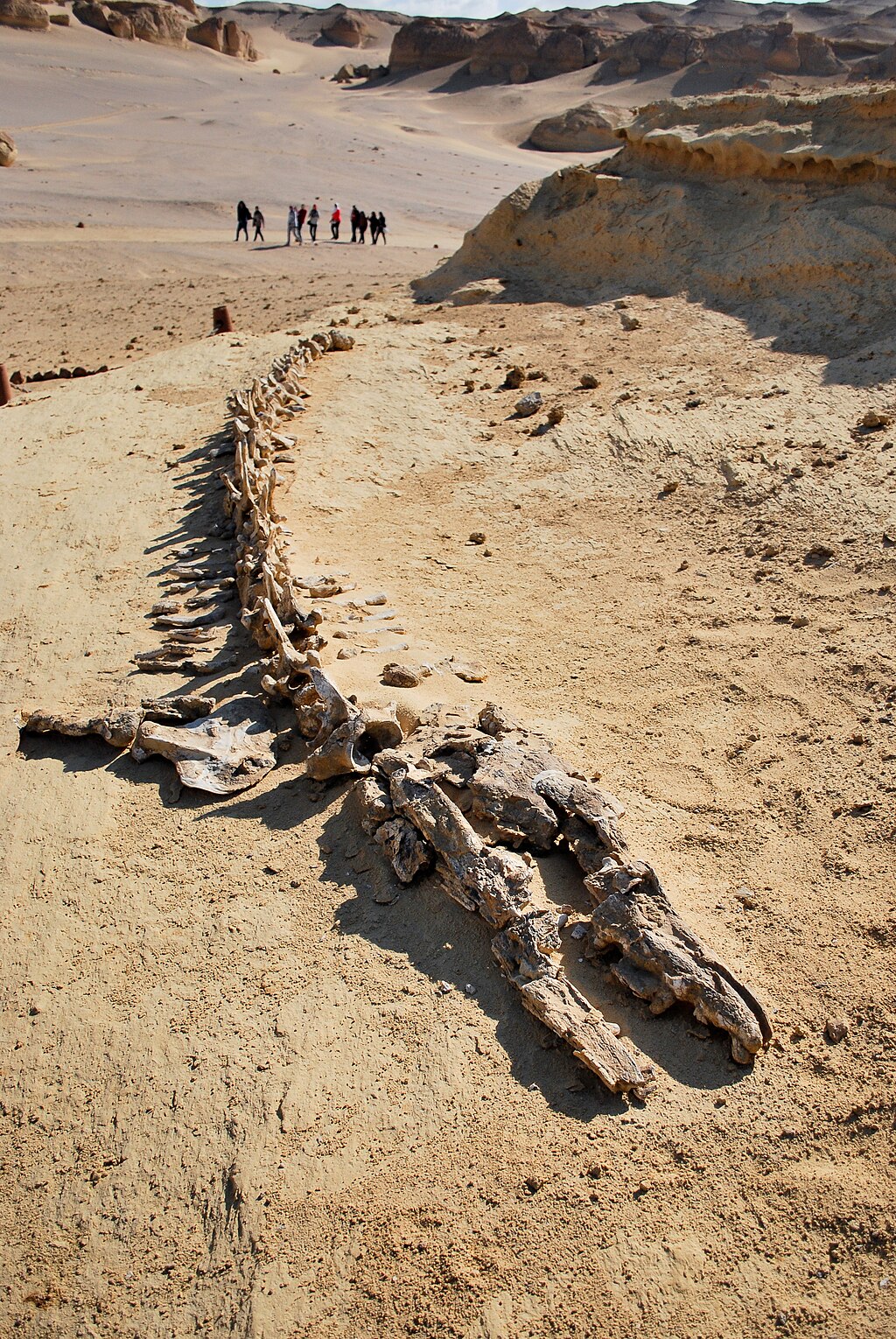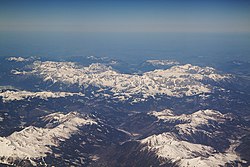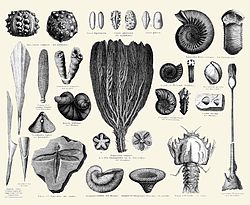Wadi Al-Hitan
The fossils found at the site may not be the oldest but their great concentration in the area and the degree of their preservation is to the extent that even some stomach contents are intact. The presence of fossils of other early animals such as sharks, crocodiles, sawfish, turtles and rays found at Wadi El-Hitan makes it possible to reconstruct the surrounding environmental and ecological conditions of the time, adding to its justification to be cited as a Heritage site.
The first fossil skeletons of whales were discovered in the winter of 1902-3. For the next 80 years they attracted relatively little interest, largely due to the difficulty of reaching the area. In the 1980s interest in the site resumed as four wheel drive vehicles became more readily available. Continuing interest coincided with the site being visited by fossil collectors, and many bones were removed, prompting calls for the site to be conserved. The remains display the typical streamlined body form of modern whales, yet retaining some of the primitive aspects of skull and tooth structure. The largest skeleton found reached up to 21 m in length, with well-developed five-fingered flippers on the forelimbs and the unexpected presence of hind legs, feet, and toes, not known previously in any archaeoceti. Their form was serpentine and they were carnivorous. A few of these skeletal remains are exposed but most are shallowly buried in sediments, slowly uncovered by erosion. Wadi El-Hitan provides evidences of millions of years of coastal marine life.Relevante Bilder
Relevante Artikel
Marines SedimentAls marine Sedimente oder Meeressedimente bezeichnet die Geologie jene Sedimente, die sich in Meeresbecken ablagern bzw. abgelagert haben. Sie stellen weltweit den größten Anteil unter sowohl den rezenten Sedimenten als auch den Sedimentgesteinen. Die Masse unter den Meeressedimenten stellen wiederum die Schelfsedimente. Den Meeressedimenten gegenüber stehen die terrestrischen Sedimente die alle Ablagerungen des Festlands, einschließlich der Süßgewässer, umfassen. .. weiterlesen





